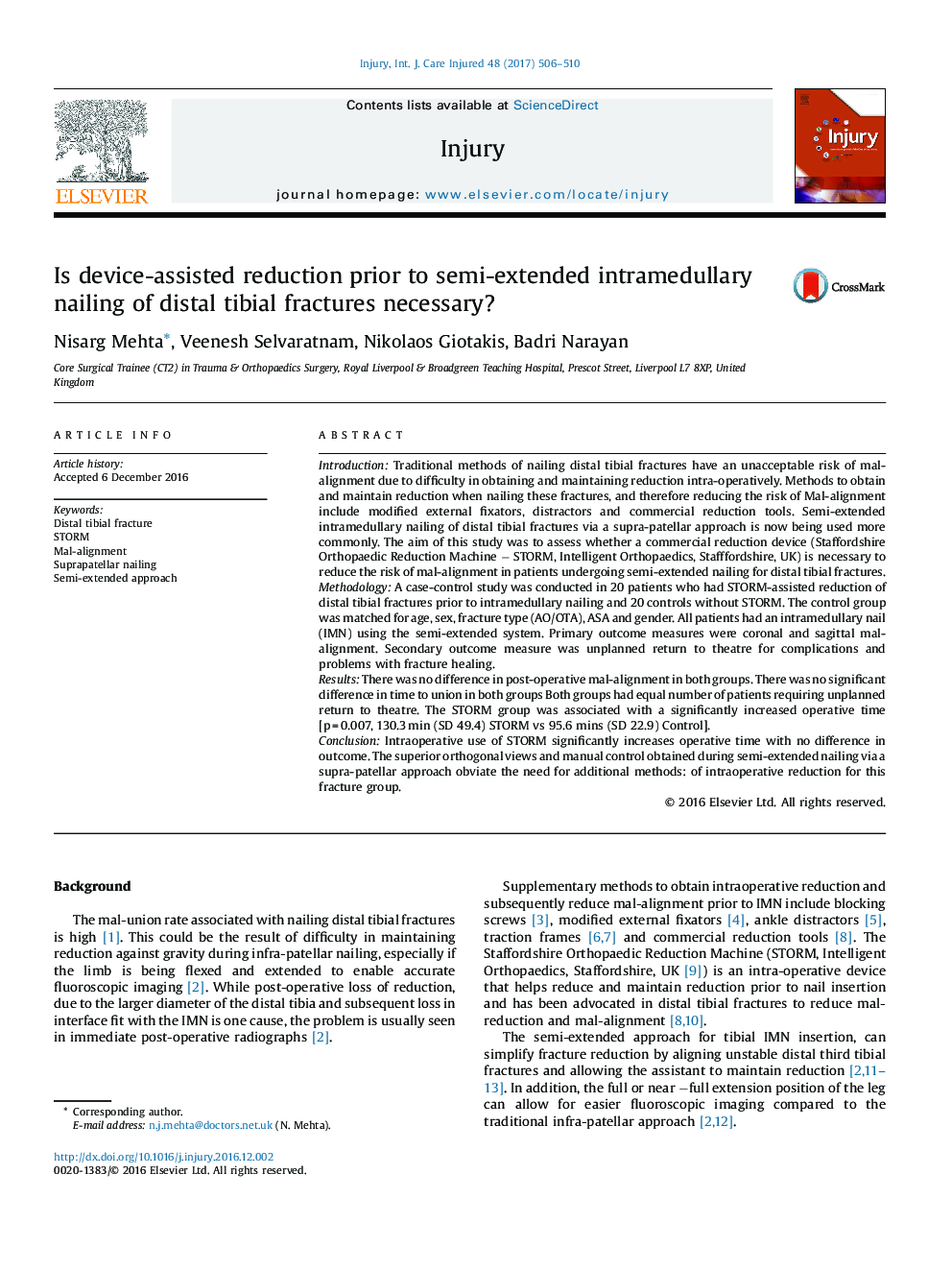| کد مقاله | کد نشریه | سال انتشار | مقاله انگلیسی | نسخه تمام متن |
|---|---|---|---|---|
| 5652829 | 1407227 | 2017 | 5 صفحه PDF | دانلود رایگان |
IntroductionTraditional methods of nailing distal tibial fractures have an unacceptable risk of mal-alignment due to difficulty in obtaining and maintaining reduction intra-operatively. Methods to obtain and maintain reduction when nailing these fractures, and therefore reducing the risk of Mal-alignment include modified external fixators, distractors and commercial reduction tools. Semi-extended intramedullary nailing of distal tibial fractures via a supra-patellar approach is now being used more commonly. The aim of this study was to assess whether a commercial reduction device (Staffordshire Orthopaedic Reduction Machine â STORM, Intelligent Orthopaedics, Stafffordshire, UK) is necessary to reduce the risk of mal-alignment in patients undergoing semi-extended nailing for distal tibial fractures.MethodologyA case-control study was conducted in 20 patients who had STORM-assisted reduction of distal tibial fractures prior to intramedullary nailing and 20 controls without STORM. The control group was matched for age, sex, fracture type (AO/OTA), ASA and gender. All patients had an intramedullary nail (IMN) using the semi-extended system. Primary outcome measures were coronal and sagittal mal-alignment. Secondary outcome measure was unplanned return to theatre for complications and problems with fracture healing.ResultsThere was no difference in post-operative mal-alignment in both groups. There was no significant difference in time to union in both groups Both groups had equal number of patients requiring unplanned return to theatre. The STORM group was associated with a significantly increased operative time [p = 0.007, 130.3 min (SD 49.4) STORM vs 95.6 mins (SD 22.9) Control].ConclusionIntraoperative use of STORM significantly increases operative time with no difference in outcome. The superior orthogonal views and manual control obtained during semi-extended nailing via a supra-patellar approach obviate the need for additional methods: of intraoperative reduction for this fracture group.
Journal: Injury - Volume 48, Issue 2, February 2017, Pages 506-510
